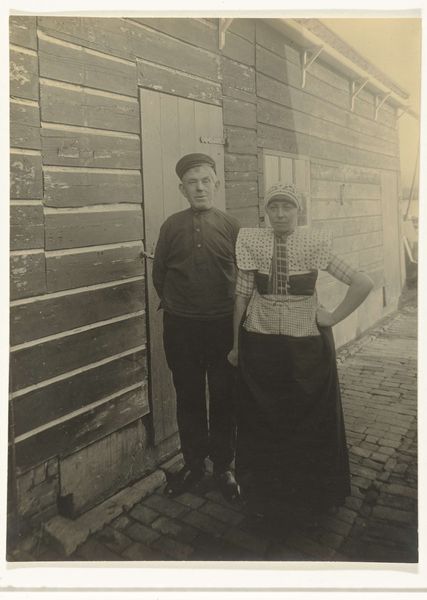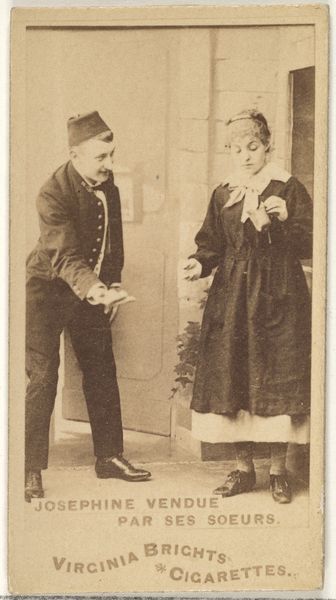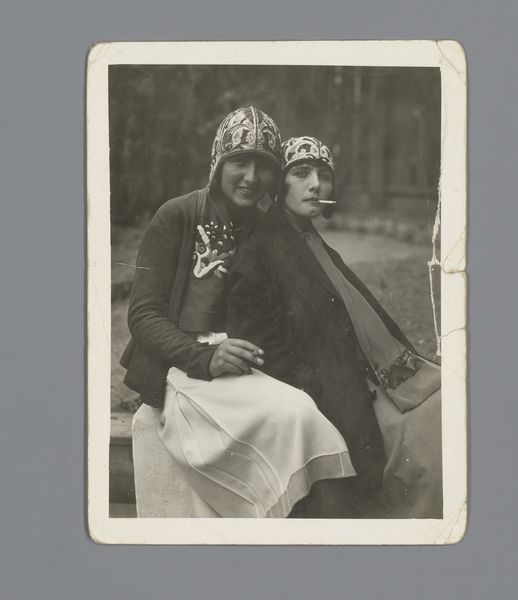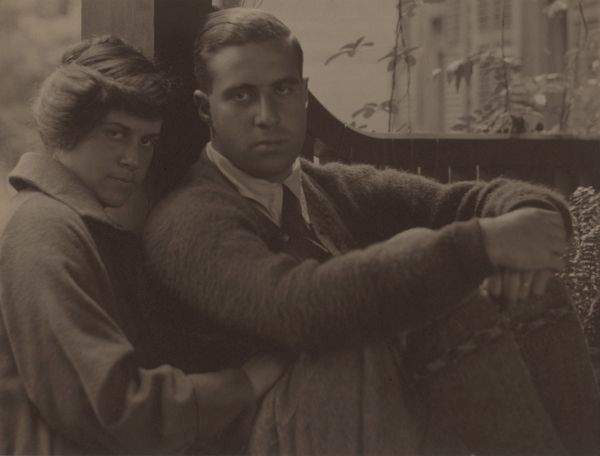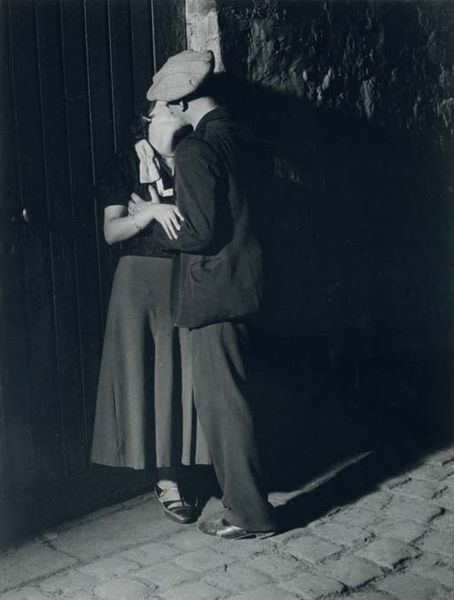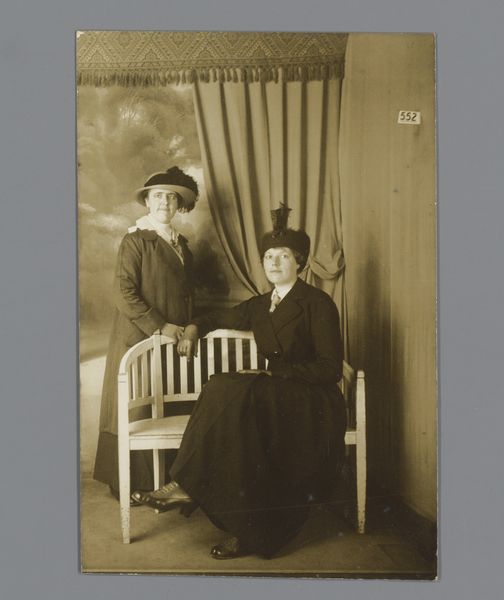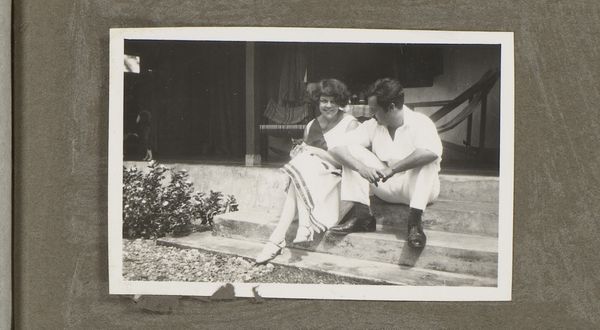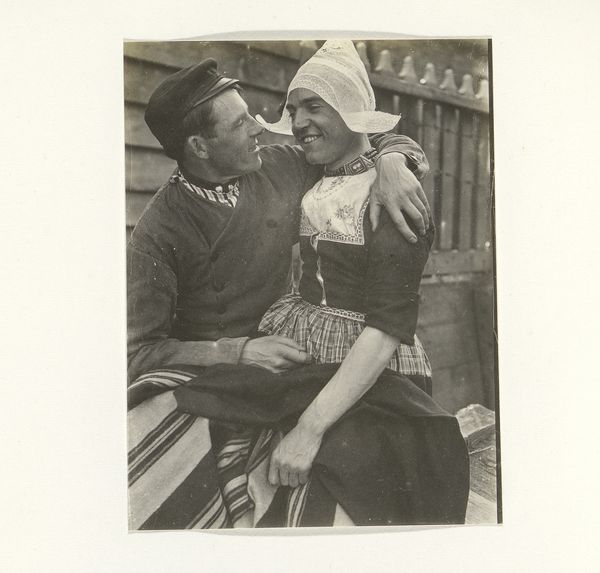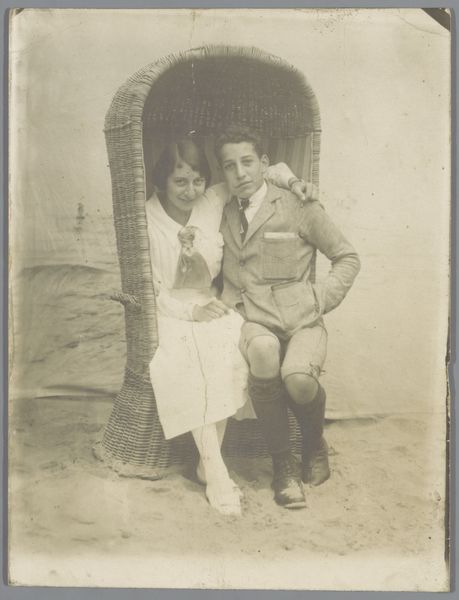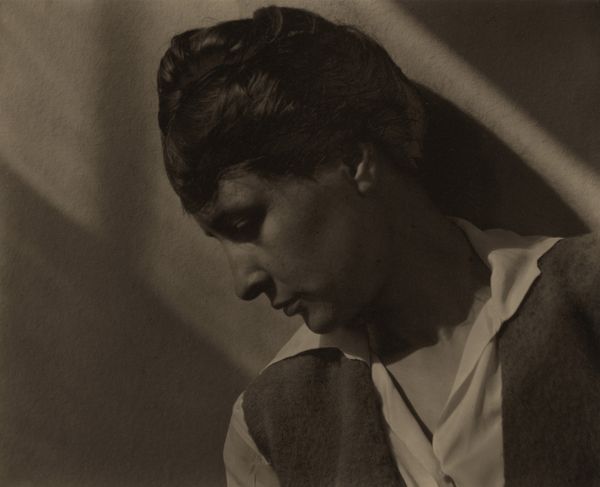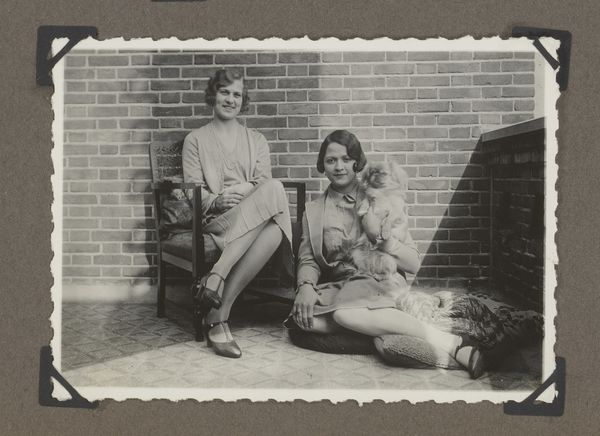
Untitled (The Bauhaus Student Albert Braun and Eva Fernbach's Sister) c. 1927 - 1928
photography, graphite
portrait
print photography
new-objectivity
self-portrait
photography
graphite
portrait photography
Copyright: Public Domain
Curator: Before us we have an untitled photograph taken circa 1927-1928, presently housed at the Städel Museum. The work depicts a Bauhaus student, Albert Braun, alongside the sister of Eva Fernbach. Editor: There's a striking vulnerability here. The texture of the brick provides a brutalist contrast with the soft styling of their clothes and the gentle gradient of greyscale. It's melancholic, wouldn't you say? Curator: Interesting. Formally, the brick wall is important—note how the sharp right angle behind the figures bisects the composition. The differing expressions—Braun looking downward, her with eyes closed or averted—generate a subtle diagonal pull from the lower left to the upper right corner. The wall then, traps the pair. Editor: The "New Objectivity" style seems relevant here. In post-war Germany, this type of portrait was deployed as a social tool, revealing and cataloging citizens without embellishment. Do you find this fits that mode, in relation to that categorization? Curator: In that respect it differs. While the crispness is present, and even that background seems to amplify this documentary approach, a casual intimacy pervades that suggests something far beyond the mere registration of identities. Editor: Consider, though, the social implications of representing Bauhaus students in this way. Doesn't it reveal a society grappling with modernism, youth culture, and changing gender roles? Her flapper dress, his intellectual bearing... Curator: A flapper dress with linear elements to emphasize shape! You are likely correct about the historical background—and I grant you the modernity expressed in this imagery is very powerful. Note her cropped hair contrasting with his styled cap. In this picture there are very deliberate compositional gestures. I am most taken by these choices made regarding formal structure in what you accurately deem an important social context. Editor: Indeed, thinking about its initial reception in the Weimar Republic adds yet another layer of meaning to the image. It really captures the ethos of that time. Curator: Absolutely. Thank you. Your historical insights complement my analysis well.
Comments
No comments
Be the first to comment and join the conversation on the ultimate creative platform.
